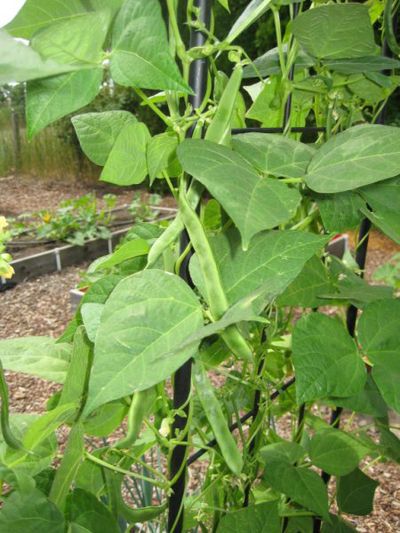The key to high yields? Pick the right vegetables

Every year, I grow about 20 different types of vegetable crops because I love variety and have plenty of room. If you are new to veggie gardening and have limited space for a garden, you will want to grow crops that will give you the most bang for your buck.
Here is my list of the best vegetables to grow, based on high yields and ease of growing. Let’s start with cool-season crops first, which are generally planted in early to mid-April:
Lettuce: It’s hard to beat a fresh salad made with homegrown greens. Garden centers sell an incredible array of varieties sure to please everyone’s taste buds.
I plant lettuce in blocks with the plants spaced about 4 inches apart and just pick the leaves rather than whole plants to extend the harvest.
Onions: The simplest way to grow them is from “sets,” which are the small bulbs that garden centers sell. Plant them with the pointed end up about 1 inch deep and space them 2 to 3 inches apart. As they grow, harvest some as scallions and let others mature into full-sized bulbs that can be stored.
Peas: This cool-season crop can be sown directly into the garden in about mid-April or started indoors two weeks before that. Most pea varieties need a trellis or other vertical support to climb on.
Three types of peas are available: edible pod, shelling and sugar snap. I’ve grown bush varieties that aren’t supposed to need a support but have found they usually will fall over into a tangled mass, making harvesting a pain in the neck.
My advice? Use a trellis.
Potatoes: Traditionally planted around Good Friday, seed potatoes are also found in garden centers and certified to be disease-free. Plant them 6 inches deep and 1 foot apart. Cover the planting bed with a mulch of grass clippings from an untreated lawn or weed-free straw to keep the sun from shining on potatoes growing at the surface.
Harvest new potatoes when the plants start blooming and full-sized potatoes when the plants get frosted in the fall.
Here are some easy warm-season crops to grow. Start beans in early May and plant squash and tomatoes around the first of June.
Beans: Bush beans grow about a foot tall and don’t need extra support. Pole beans need a trellis to grow on.
Plant all bean seeds 1 inch deep. Bush beans should be spaced 6 inches apart and pole beans 2 to 3 inches apart.
Tomatoes: There is nothing better than the taste of a homegrown, sun-ripened tomato. Choose varieties that will mature in less than 90 days, although I’d go with ones that ripen much earlier than that.
Good varieties include Siberia, Early Goliath, Oregon Spring, Early Girl, Siletz, Stupice, Sungold and Yellow Pear. Plant the seedlings deeply and provide them with a sturdy tomato cage for support.
Winter squash: The most productive types are acorn, spaghetti or butternut squash. Plant seeds 1 inch deep and 2 feet apart. Winter squash grow on long vines so be sure to plant them where they can sprawl.
Zucchini: One of the easiest veggies to grow, zucchini and other summer squash will give high yields if they are provided with plenty of nutrients and watered regularly.
Plant the seeds 1 inch deep and space the plants 2 to 3 feet apart. Harvest the squash while they’re small and tender.
I will go into more detail about cool- and warm-season crops over the next few weeks – including more variety recommendations – but this should help you narrow down the list of veggies you want to grow.